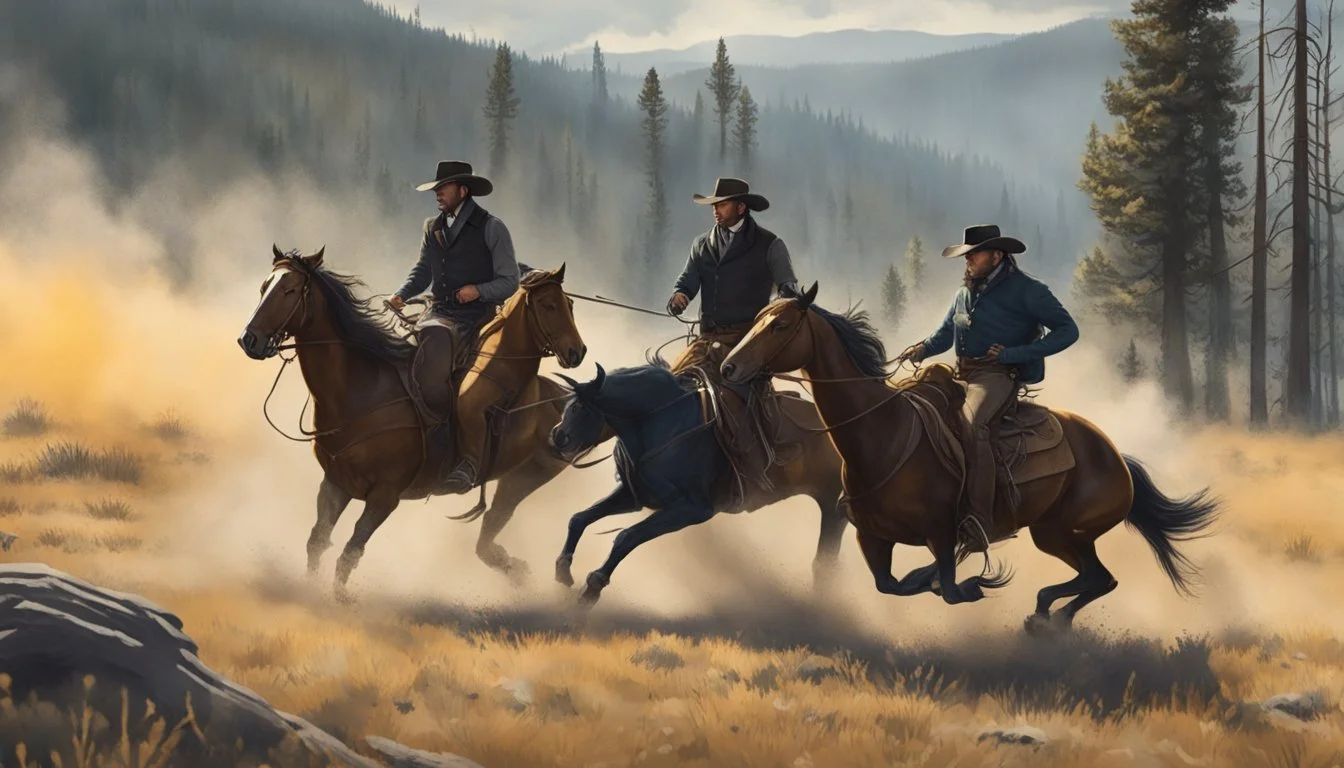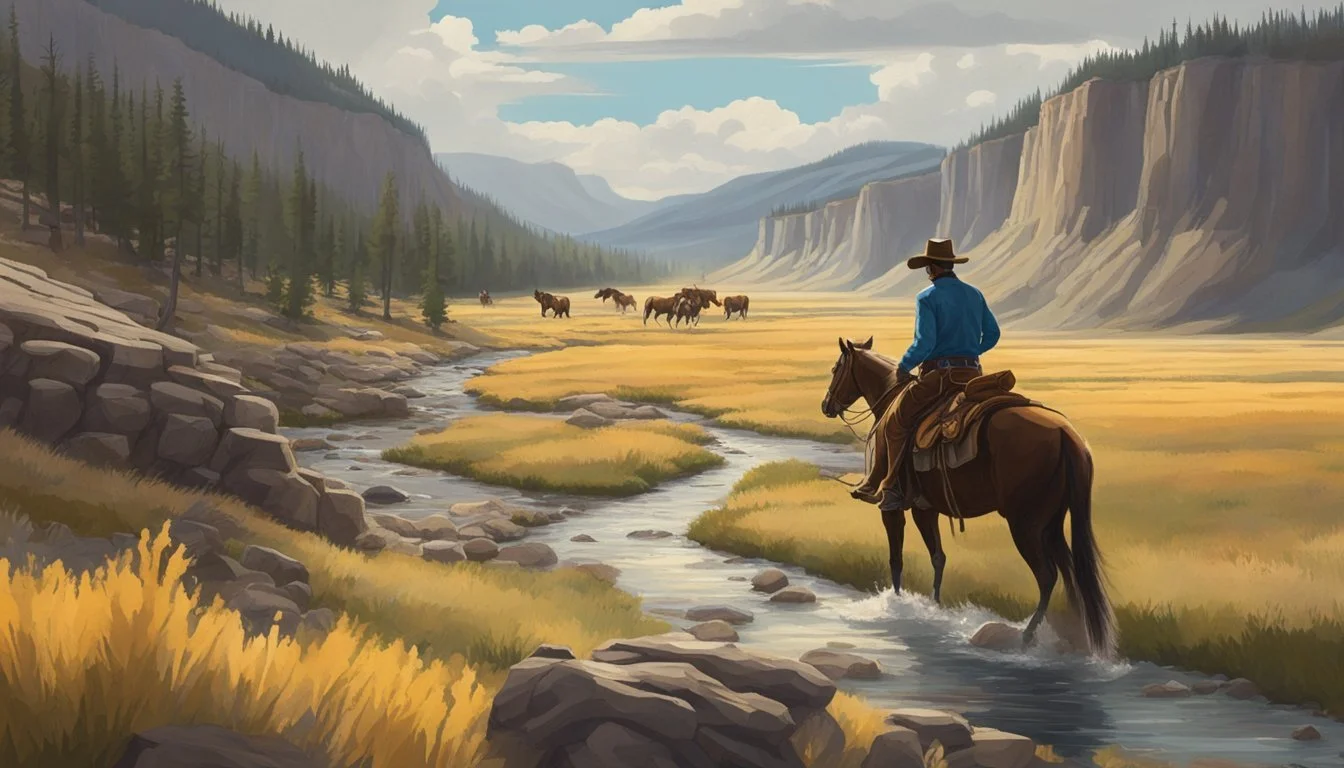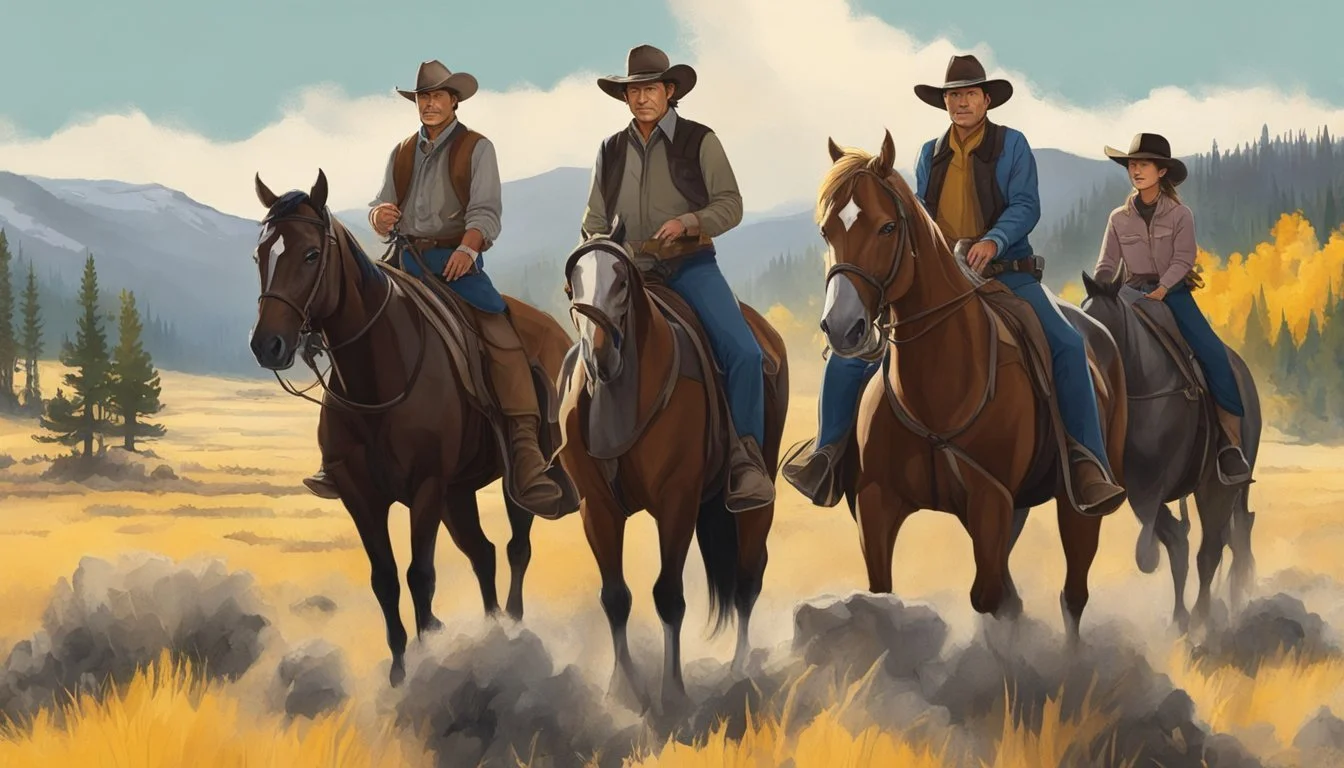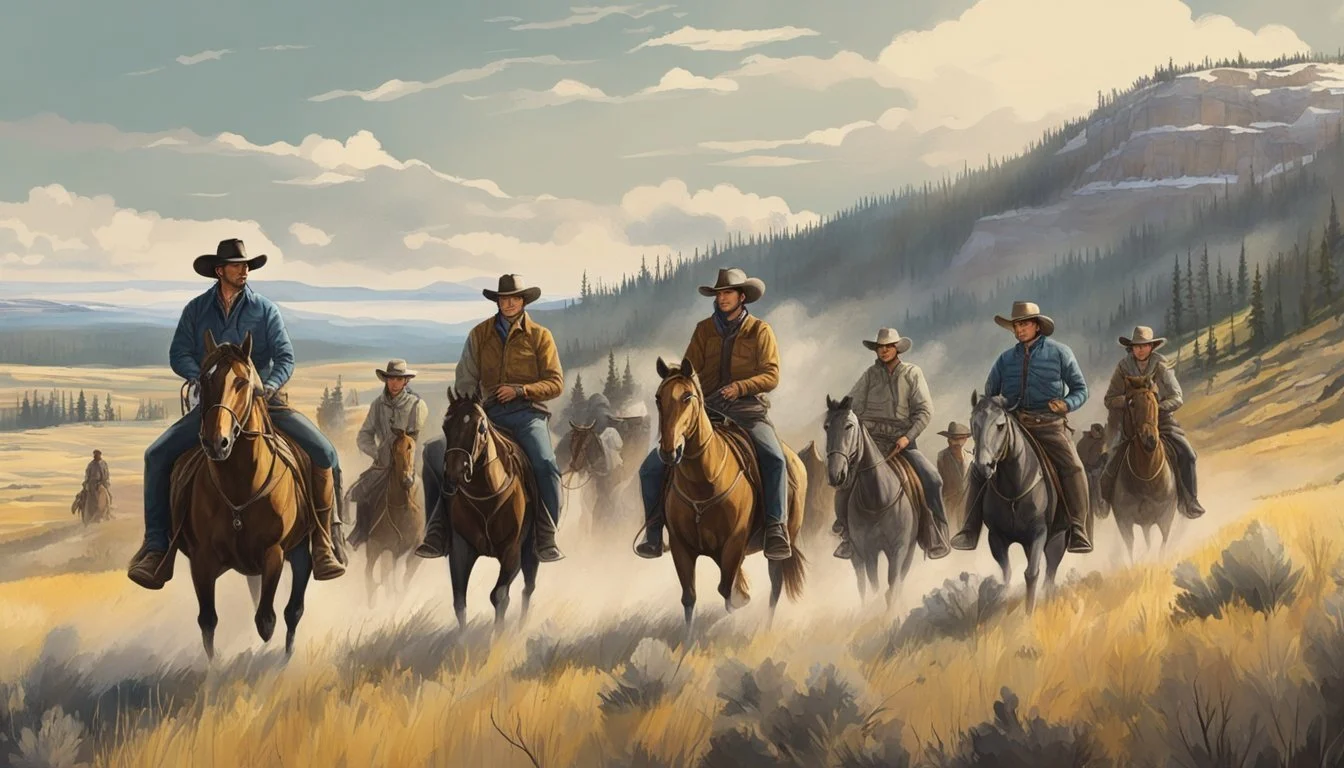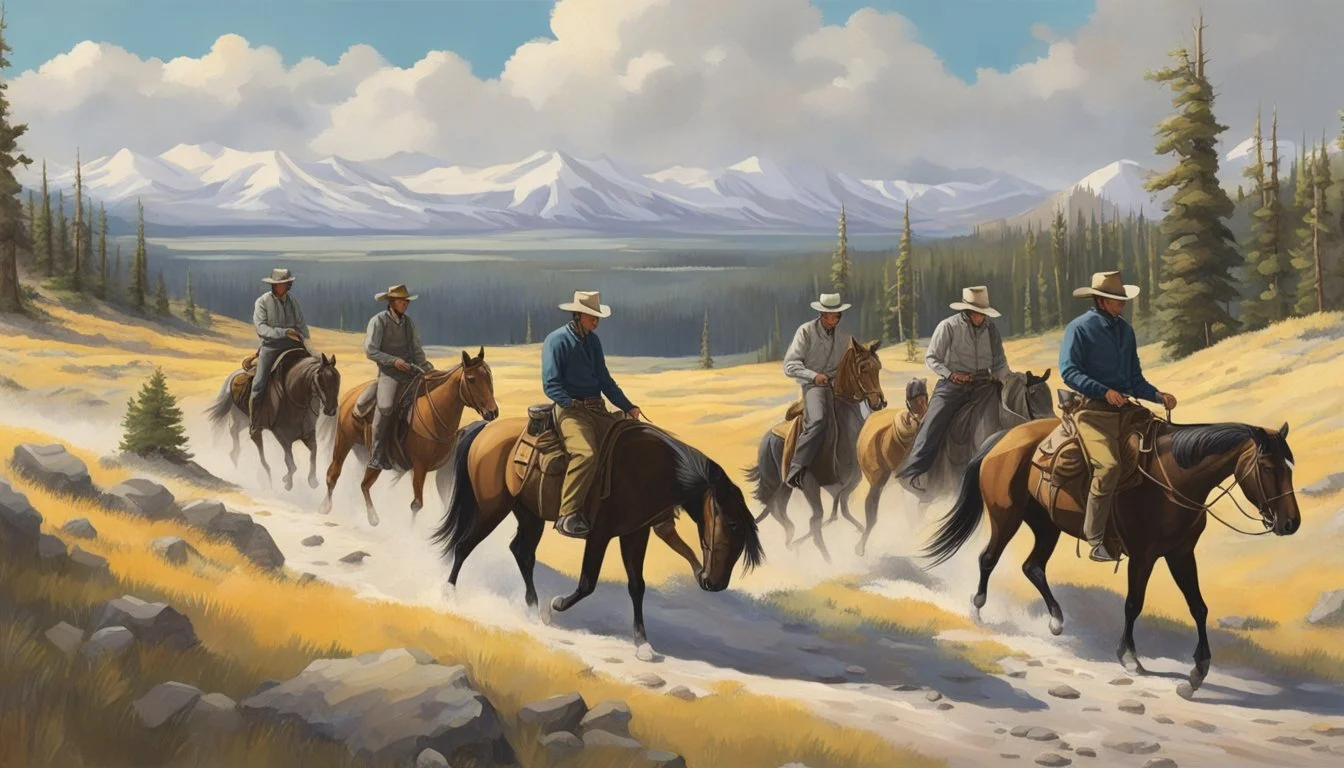Yellowstone Exposes America's Dark Secrets Behind Land Ownership Battles
The hit TV series Yellowstone has captured America's attention, offering a gripping portrayal of land ownership struggles in the American West. Set against the backdrop of Montana's rugged landscape, the show delves into the complex dynamics between rural values, corporate interests, and political power.
At its core, Yellowstone explores the Dutton family's fight to maintain control of their vast ranch. This central conflict serves as a metaphor for broader societal tensions, highlighting the clash between traditional ways of life and modern economic pressures. The series skillfully weaves together themes of family loyalty, generational conflict, and the preservation of cultural heritage.
Yellowstone's narrative resonates with viewers across the political spectrum, tapping into deeply held American values of independence and self-reliance. By examining issues such as land rights, conservation, and economic development, the show provides a nuanced commentary on the challenges facing rural communities in contemporary America.
Historical Evolution of Land Ownership in America
Land ownership in America has undergone significant transformations since colonial times. Key policies and ideologies shaped the distribution and control of land across the continent.
The Homestead Act and Westward Expansion
The Homestead Act of 1862 dramatically altered American land ownership. It allowed citizens to claim 160 acres of public land for free if they lived on it for five years. This policy encouraged westward migration and settlement of frontier territories.
Millions of Americans took advantage of this opportunity. Farmers, former slaves, and immigrants sought economic independence through land ownership. The act distributed 270 million acres of land over its lifetime.
However, the Homestead Act also had negative consequences. It led to the displacement of Native American tribes and accelerated environmental changes as settlers transformed prairies into farmland.
Manifest Destiny and the Indian Removal Act
Manifest Destiny, the belief that American expansion across the continent was inevitable and justified, drove land acquisition policies in the 19th century. This ideology supported aggressive territorial growth.
The Indian Removal Act of 1830 was a direct result of this expansionist mindset. It authorized the forced relocation of Native American tribes from their ancestral lands in the southeastern United States.
Thousands of Native Americans were displaced, with many dying on the forced marches known as the Trail of Tears. This act fundamentally reshaped land ownership patterns and had lasting impacts on tribal sovereignty.
Endangered Species Act and Conservation Efforts
The Endangered Species Act of 1973 marked a shift in American land use priorities. It recognized the importance of preserving habitats for threatened and endangered species.
This legislation impacted private and public land management practices. Landowners faced new restrictions on how they could develop or use their property if it contained critical habitats.
Conservation easements became more common, allowing landowners to protect portions of their land in perpetuity. Public lands also saw increased protections, with wilderness areas and national parks expanding to safeguard biodiversity.
Yellowstone and the Neo-Western Genre
Yellowstone has redefined the Western genre for modern audiences, blending traditional elements with contemporary themes. The show's portrayal of the American West resonates deeply with viewers, sparking discussions about land, power, and identity.
Cultural Influence of Yellowstone on American Values
Yellowstone's impact on popular culture extends beyond entertainment, shaping perceptions of the modern American West. The series taps into core American values like individualism, family loyalty, and the struggle to preserve tradition in a changing world. It portrays a romanticized yet complex view of rural life, appealing to audiences nostalgic for a mythic frontier spirit.
The show's depiction of land conflicts and power struggles reflects real tensions in many Western communities. This authenticity has made Yellowstone a cultural touchstone, influencing how Americans view issues of land use, conservation, and rural economic development.
Taylor Sheridan's Vision and Narrative Impact
Taylor Sheridan, Yellowstone's creator, brings a unique perspective to the neo-Western genre. His storytelling blends gritty realism with sweeping vistas and larger-than-life characters. Sheridan's vision centers on exploring the complexities of the modern West, tackling themes like:
Changing economic realities for ranchers
Conflicts between tradition and progress
Political power dynamics in rural areas
Native American rights and representation
Sheridan's narrative approach in Yellowstone has set a new standard for the neo-Western genre. The show's success on Paramount Network has inspired a wave of similar productions, cementing its place in the evolution of Western storytelling.
The Dutton Family Saga and American Archetypes
The Dutton family in Yellowstone embodies powerful American archetypes that resonate with viewers. Their complex dynamics and fierce devotion to their land reflect enduring cultural values and tensions in modern American society.
John Dutton's Representation of the American Patriarch
John Dutton, portrayed by Kevin Costner, exemplifies the traditional American patriarch. He's a strong-willed rancher fighting to preserve his family's legacy and way of life. John's character taps into ideals of rugged individualism and self-reliance.
His unwavering commitment to the Yellowstone ranch mirrors many Americans' attachment to property rights and land ownership. John's struggles against outside forces threatening his land speak to broader anxieties about changing demographics and economic pressures in rural America.
As the head of the Dutton family, John embodies a mix of stern authority and fierce protectiveness. His complex relationships with his children highlight tensions between tradition and change.
Beth and Kayce Dutton: Complexities of Modern Western Characters
Beth and Kayce Dutton represent different facets of the modern American West. Beth, a sharp-tongued businesswoman, challenges stereotypes about women in ranching communities. Her ruthless tactics in corporate battles reflect the harsh realities of preserving family interests in a changing economy.
Kayce straddles two worlds as a former Navy SEAL and reluctant heir to the Yellowstone ranch. His character explores themes of duty, family loyalty, and the pull between tradition and personal aspirations.
Both Beth and Kayce grapple with personal demons while navigating their roles within the family. Their stories highlight the complexities faced by younger generations in reconciling family expectations with individual identities.
Rip Wheeler: The Embodiment of Rugged Masculinity
Rip Wheeler stands as a quintessential cowboy figure, embodying ideals of rugged masculinity and unwavering loyalty. As the Duttons' ranch foreman, Rip represents a romanticized vision of the American West.
His fierce dedication to John Dutton and the ranch underscores themes of chosen family and earned trust. Rip's rough exterior belies a strong moral code and deep sense of honor.
The character's popularity reflects a cultural fascination with traditional masculine archetypes. Rip's relationship with Beth adds layers of vulnerability to his tough-guy persona, creating a more nuanced portrayal of masculinity in the modern West.
The Intersection of Land and Identity
Land ownership in America intertwines deeply with personal, cultural, and national identity. The struggle for control over territory shapes the values and conflicts portrayed in Yellowstone, reflecting broader tensions in American society.
Traditional Ranching and the American West
Ranchers in the American West view their land as more than property - it's their heritage and livelihood. This connection forges a distinct identity tied to rugged individualism and self-reliance. Yellowstone's Dutton family embodies this ethos, fiercely defending their ranch against encroaching development.
The show portrays ranching as a vanishing way of life. Many ranchers feel their traditions and values are under siege from urban expansion, changing economies, and shifting cultural norms. This perceived threat strengthens their resolve to maintain their land and lifestyle.
Ranching families often trace their roots back generations on the same land. This legacy creates a profound sense of belonging and responsibility to preserve the ranch for future generations.
Indigenous People and Tribal Sovereignty
Native American tribes have a sacred, ancestral connection to the land that predates modern property concepts. Yellowstone touches on this complex history through characters like Monica Dutton and interactions with the fictional Broken Rock Reservation.
Tribal sovereignty remains a contentious issue. Many tribes seek to reclaim ancestral lands and protect sacred sites from development. This struggle highlights ongoing tensions between Indigenous rights and federal/state authority.
Land holds immense cultural and spiritual significance for Native communities. It's integral to traditional practices, languages, and identities. The show explores how land loss has impacted Indigenous cultures and fueled efforts for preservation and revitalization.
Rural Communities and the Quest for Preservation
Small towns in rural America often define themselves through their relationship with the surrounding landscape. Yellowstone depicts how these communities grapple with economic pressures and outside influences threatening their way of life.
Many rural residents view land conservation efforts skeptically. They see regulations as government overreach that limits their ability to use their property. The show explores this tension between preservationists and those who prioritize local control.
Tourism and recreation offer economic opportunities but can also strain local resources and alter community dynamics. Yellowstone illustrates how rural areas navigate the benefits and drawbacks of becoming travel destinations.
Debates over land use pit different visions for rural America against each other. Some advocate for maintaining traditional industries, while others push for new economic models. This conflict shapes local politics and community identities.
Socio-Economic Tensions and Land Ownership
Land ownership in rural America is a complex issue intertwined with economic pressures, cultural shifts, and evolving power dynamics. These factors create significant tensions between different groups and interests, shaping the ongoing conflicts over land use and ownership.
Gentrification and Displacement in Rural America
Rural gentrification is transforming many small towns and communities across the United States. Wealthy outsiders purchase land and properties, often as second homes or investment opportunities. This influx of money drives up property values and living costs.
Long-time residents face increasing financial pressure to sell their land or relocate. Local businesses struggle to keep up with changing demographics and consumer preferences. The character of rural communities shifts as new amenities cater to affluent newcomers.
These changes can lead to the displacement of multi-generational families and erosion of traditional community ties. The process reshapes the social and economic landscape of rural areas, often benefiting newcomers at the expense of established residents.
Economic Pressures and Traditional Ways of Life
Family-owned farms and ranches face mounting economic challenges. Rising operational costs, market volatility, and competition from large-scale industrial agriculture squeeze profit margins. Many struggle to maintain their livelihoods and pass their land to the next generation.
Government policies and subsidies often favor large corporate farms over small family operations. This imbalance makes it difficult for traditional farmers to compete in the modern agricultural economy. Some turn to alternative revenue streams like agritourism or organic farming to stay afloat.
The decline of traditional agriculture impacts rural communities beyond the farm gate. Local businesses, schools, and social institutions feel the ripple effects as families leave in search of economic opportunities elsewhere.
Corporate Influence vs. Family Business Values
Large corporations increasingly shape rural land use and ownership patterns. Agribusiness conglomerates, energy companies, and real estate developers wield significant economic and political influence. Their interests often clash with those of family-owned businesses and local communities.
Corporate entities can offer economic benefits through job creation and infrastructure investment. However, they may also prioritize short-term profits over long-term community well-being. This tension is particularly evident in debates over resource extraction, water rights, and land conservation.
Family businesses, deeply rooted in their communities, often emphasize stewardship and sustainability. They balance economic needs with preserving cultural heritage and environmental resources. This approach can conflict with corporate strategies focused on maximizing shareholder value.
The struggle between corporate influence and family business values reflects broader debates about the future of rural America and its relationship to the land.
Political and Social Dynamics of Land Use
Land use in Yellowstone sparks heated debates over ownership, environmental protection, and resource management. These issues reflect broader tensions in American society about balancing development with conservation.
Land Disputes and Environmental Regulations
The Yellowstone region faces ongoing conflicts between private landowners, developers, and conservationists. Ranchers struggle to maintain their livelihoods amid stricter environmental rules. Some argue these regulations unfairly burden rural communities.
Park expansion proposals often meet resistance from local residents concerned about losing access to traditional lands. Environmental groups push for wider protected areas to preserve ecosystems and wildlife corridors.
Zoning laws and land use permits become political battlegrounds. Local governments weigh economic benefits of development against long-term environmental impacts. Corruption allegations sometimes surface around land deals and regulatory decisions.
Property Rights and the Balance of Power
Land ownership in Yellowstone embodies the American ideal of individual property rights. Large ranches symbolize independence and self-reliance. However, their concentrated wealth also creates power imbalances in local politics.
Wealthy out-of-state buyers purchasing vast tracts raise concerns about changing community dynamics. Some fear outside interests may not understand or respect local traditions and needs.
Native American tribes continue to advocate for greater recognition of their historical land claims and treaty rights. This adds another layer to debates over rightful ownership and land use priorities.
Water Rights and Resource Management
Water access is a critical issue in the arid Yellowstone region. Complex systems of water rights govern usage, often pitting agricultural needs against urban growth and environmental concerns.
Rivers and aquifers cross property lines, requiring cooperative management. Climate change intensifies conflicts as droughts become more frequent. Some landowners drill deeper wells, potentially depleting shared groundwater resources.
Energy development, including oil and gas extraction, creates additional tension. While bringing economic benefits, it raises concerns about long-term environmental impacts and resource depletion.
Balancing diverse stakeholder interests in resource management remains an ongoing challenge. It reflects broader national debates about sustainability, economic development, and environmental stewardship.
Conservation and National Narratives
Yellowstone National Park stands as a symbol of America's conservation ethos, reflecting evolving attitudes toward land preservation and wildlife management. Its establishment and ongoing stewardship illuminate key tensions in balancing public use, environmental protection, and economic interests.
Yellowstone National Park and Environmental Conservation
The creation of Yellowstone National Park in 1872 marked a watershed moment for conservation in the United States. As the world's first national park, it set a precedent for protecting natural wonders and wildlife habitats. This bold move reflected growing concerns about unchecked development and resource exploitation in the American West.
Yellowstone's designation sparked a national conversation about the value of pristine landscapes. It challenged prevailing notions of land use, prioritizing preservation over extraction. The park became a living laboratory for ecological research and a model for conservation efforts worldwide.
Stewardship and the Ethics of Wildlife Management
Wildlife management in Yellowstone has evolved significantly since the park's inception. Early policies focused on protecting "good" animals while eliminating predators. This approach led to unintended consequences, disrupting natural ecosystems.
Modern stewardship embraces a more holistic view:
Reintroduction of wolves in 1995
Bison population management
Grizzly bear conservation efforts
These initiatives aim to restore ecological balance while navigating complex ethical and practical considerations. Managers must weigh public safety, scientific research, and the intrinsic value of wildlife.
Climate Change, Modernization, and the Future of Land Preservation
Climate change poses unprecedented challenges to Yellowstone's ecosystems. Rising temperatures affect:
Snowpack and water availability
Wildfire frequency and intensity
Plant and animal species distribution
Park managers are developing adaptive strategies to mitigate these impacts. This includes monitoring key indicators, adjusting fire management practices, and considering assisted migration for vulnerable species.
Modernization brings additional pressures. Increased visitation strains park infrastructure and threatens delicate habitats. Balancing public access with preservation remains an ongoing challenge. Yellowstone's approach to these issues will likely influence land management policies across the nation.
Legal and Regulatory Frameworks
Land ownership in the American West involves complex legal and regulatory structures. These frameworks shape how land is used, developed, and preserved.
Land Use Policies and Conservation Easements
Land use policies govern how property can be utilized and developed. Zoning laws dictate allowable activities in specific areas, balancing economic interests with environmental protection. Conservation easements offer landowners tax benefits for preserving natural or historic features of their property.
These legal tools aim to maintain open spaces and wildlife habitats. They can restrict subdivision, limit building density, and protect scenic views. Many ranchers use conservation easements to keep their land intact while gaining financial advantages.
Government Agencies and Control Over Land
Federal and state agencies play significant roles in land management. The Bureau of Land Management oversees vast tracts of public lands, while the U.S. Forest Service manages national forests. These agencies implement policies affecting grazing rights, resource extraction, and recreational access.
State-level departments of natural resources often work alongside federal entities. They enforce regulations on hunting, fishing, and water use. Local county commissions also influence land use through permitting processes and infrastructure decisions.
Conflicts can arise between different levels of government and private landowners over control and access rights.
Legal Aspects of Agricultural Land and Urban Development
Agricultural land faces pressure from urban expansion. Right-to-farm laws protect existing agricultural operations from nuisance lawsuits as cities grow closer. These laws recognize the economic and cultural importance of farming.
Urban development near natural areas creates challenges for wildlife management and fire prevention. Some jurisdictions use urban growth boundaries to limit sprawl and preserve rural character. Others implement transferable development rights, allowing landowners to sell unused development potential.
Water rights often complicate land use decisions in arid regions. The legal doctrine of prior appropriation governs water allocation in many western states, impacting both urban and agricultural land use.

